For over 100 years, hatcheries have been producing fish in an effort to mitigate human impacts on the natural environment. Whether to increase stocks to fuel the demands of commercial and recreational fisheries, counteract the effects of habitat loss, or rescue species on the brink of extinction, hatcheries have been employed all over the planet as a tool to undo damage to fish populations caused by human beings.
Despite the mounting body of research demonstrating that hatcheries, once viewed by scientists and fisheries managers as a panacea, more often harm rather than benefit wild fish species, debate over the merit of fish hatcheries has raged on. Today, hatcheries are still a fixture across much of the world, despite the efforts of scientists and activists to inform the decisions of management agencies throughout North America, Europe, and beyond. But now, thanks to a recent study published in the scientific journal Fisheries Management and Ecology, advocates for a hatchery-free approach to fisheries management may have a powerful new weapon at their disposal.
The cooperative work of scientists from Trout Unlimited, U.S. and Canadian universities, and other organizations, the new study entitled “A global synthesis of peer-reviewed research on the effects of hatchery salmonids on wild salmonids,” evaluated over 50 years of scientific studies from around the world which investigated the impacts of fish hatcheries on wild salmonid populations. The study’s results were resounding, revealing that 83 percent of all published research determined that hatcheries had an adverse impact on wild fish populations. Perhaps even more alarming was the study’s discovery that a mere 3 percent of research during the last half century demonstrated a beneficial hatchery impact on wild fish populations.
Commenting on the study, Rob Masonis, Trout Unlimited’s Vice President for the Pacific Region noted, “This comprehensive analysis of peer-reviewed research underscores the need to make sure hatcheries are used judiciously for clearly defined purposes and with appropriate safeguards. Across the world, many salmonid hatcheries were built decades ago to support fisheries and replace natural salmonid production lost to dams and habitat destruction. Unfortunately, back then, managers lacked the scientific understanding we now have about the harmful impacts of hatcheries on the wild, naturally reproducing populations the hatcheries were intended to boost. If we are going to succeed in recovering depleted wild salmonid populations – which are more productive and resilient to climate change than hatchery fish – we need to make sure hatchery operations are aligned with wild population recovery goals. Without that alignment we risk undermining the enormous investments we are making in habitat restoration and other recovery actions, in addition to the wild fish themselves.”

The study’s authors took care to highlight that their review did not include research focused on the use of hatcheries in reintroducing extirpated or near-extirpated fish species, as their work was aimed at gaining insight on hatcheries’ impacts on existing, intact wild fish populations.
In a release, Helen Nellville, one of the study’s authors and a Trout Unlimited Senior Scientist noted, “We recognize that hatcheries play a significant role in specific regions where wild salmon and steelhead remain on the brink of extinction because of habitat degradation, including places where dams have drastically reduced wild production. In such places, hatchery salmon and steelhead, for instance, often serve as a vital lifeline to the lives, cultures, and well-being of tribal nations.”
Elsewhere, where situations are less dire and populations are not on the verge of extirpation, Nellville added, “Informed by the global science, we hope this work will motivate and support a deeper consideration of when and where hatcheries may, or may not, be an acceptable or effective tool, and how we can minimize harmful impacts to wild salmonid populations when they are justifiably used for compelling reasons.”
Even a cursory glance at the research reviewed as part of the study's 50-year analysis provides insight into the impacts of hatcheries on wild fish populations. Common amongst the more than 150 studies that concluded hatcheries had an adverse effect on wild salmonid populations were negative impacts such as reduced genetic diversity due to interbreeding with hatchery fish, reduced average size of wild fish, reduced overall abundance of wild fish populations, and reduced fitness for natural reproduction. Of the mere 7 studies that demonstrated a beneficial impact on wild fish populations, the majority revealed an overall increase in the abundance of naturally spawning fish.
The research reviewed as part of the study has been assembled into a publicly available database that will continue to be updated as new, peer-reviewed science is published.
Update: This story was updated to include examples of positive and negative hatchery impacts on wild fish populations present in the 50 years of research reviewed in the study.




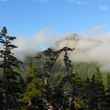
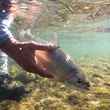

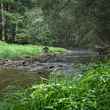
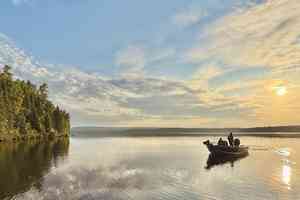


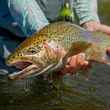
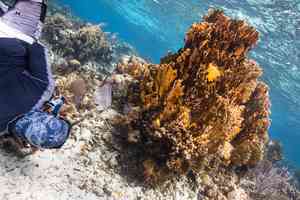

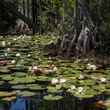




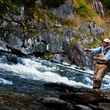




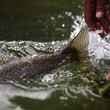

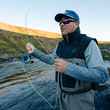

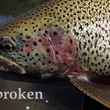
Comments
Steve ha.ilton replied on Permalink
Explain the thompson river steelhead ,no hatcheries but extinct ,never to open again .who Is to blame cause their is no hatchery program ,so must be chum fishery by catch, native by catch, seals that are in the millions up and down the coast .or just think about the fact that back when you could kill a steelhead everyone took females for the roe to catch more steekhead.hummmgh if everyone takes females you can't sustain a system end of story .crab fisherman throw back females and they a still have a fishery ???? Something to be said .but the only hatcheries that are bad are ocean net pens that for some reason decided to go with Atlantic salmon .a non resident fish .instead of steelhead ,I don't understand why you would bring atlantics that don't die like regular salmon and escape into our pacific salmon streams .the research that Alexander Mortensen did in Broughton archipelago was 25 years long and pretty much proved the amount of sick fish that were bieng predated on by all sorts of ugliness ,from flesh eating smolt killing parasites .land hatcheries don't have that .explain your theory to me cause I think yer out to lunch hatch
Anonymous replied on Permalink
What is the harm? I may have missed in the article where it describes the harm hatcheries cause. Thank you
fish replied on Permalink
Not sure where I see that hatcheries have a negative effect on wild populations or what those negative effects are? In almost 99.9% the prescence of humans is the root cause of wild fish population decline. Has nothing to do with hatcheries are in many cases are set up to help support native populations.
Sminetogive replied on Permalink
Funny how there is science saying the exact opposite. Guess the science depends on what narrative you align with.
Lance replied on Permalink
Trout Unlimited and their lobby is why we have severely decreased hatchery production of fish in Washington State. The state has shut down several salmonid hatcheries since they were sued by these environmental activists. Guess what happened? The Orcas starved. Guess what happened next? They opened back up a few hatcheries. It's all a bunch of garbage and special interest.
Jeff replied on Permalink
"Trout Unlimited and their lobby is why we have severely decreased hatchery production of fish in Washington State." I'm a Life Member of Trout Unlimited and am on the WSCTU Advocacy Committee. Trout Unlimited (TU) is our nation's largest cold-water fisheries conservation organization. It has never sued over hatcheries. We protect, reconnect, restore and sustain quality cold-water fisheries. We seek consensus and win-win strategies with all concerned.
You may be confusing us with The Wild Fish Conservancy, an organization dedicated to preserving wild salmon and steelhead and to eliminate hatcheries.
Dave replied on Permalink
I dont see any specific harms listed in this article.Like many other pieces i have read there are statements about what might,may,could or possibly be happening in the ocean.
The Alaska Dept of Fish and game put it this way when commentscwere solicited at the Salmon Summit a few years back," If there is any scientific evidence out there that hatcheries are detrimental to sal m on stocks we would not allow them" As the premier Salmon management agency on the West Coast the Alaskan made plan for salmon management is the most successful.
Chad Shmukler replied on Permalink
Dave,
From the article:
"Common amongst the more than 150 studies that concluded hatcheries had an adverse effect on wild salmonid populations were negative impacts such as reduced genetic diversity due to interbreeding with hatchery fish, reduced average size of wild fish, reduced overall abundance of wild fish populations, and reduced fitness for natural reproduction. "
You'll also find a link in the final paragraph to a database of all the research analyzed in the study, searchable by species, geography, impacts, and so on, which you can explore further.
Shawn replied on Permalink
Yet when hatchery fish are completely removed from the system no significant improvements in wild fish populations are noted. The average size of fish has dropped not due to hatcheries, which are often designed to produce larger fish anyway, but due to lack of food on the ocean, and other poor ocean conditions, higher harvest rates in the ocean, all of which results in lower age class fish returning to spawn. Which means they are smaller.
The studies also lump in every hatchery and fail to examine the type of hatchery it is and the specific hatchery program.
What the study actually shows is that the founders have a significant bias and skewed the results to predetermined conclusion.
MaverickNC replied on Permalink
This sounds like some Liberal garbage to get rid of the recreational fishing.
Shove it up your ass
Glenn Dotter replied on Permalink
Having grown up in the 50's & 60's in NE PA. I can tell these socalled scientists how fundamentally wrong they are. Had it not been for the brilliant biologists back then we would not have the quality fisheries we have today. Waters back east had been polluted and overfished. I keep hearing the term "Wild", but there is never a definition. I would suggest it means fish that are born and bred in a body of water and not raised in a hatchery. I. Would offer that a number of rivers, lakes, and streams that I have fished were devoid of wild trout but are now referred to as wild trout fisheries. The famed Battenkill, Broadheads, Bushkills, Arkansas, Pouder, and high lakes here in Colorado were stocked to maintain and recover these fisheries from pollution, overfishing, and devastating floods. Those "stockers" that survived eventually bred in those waters and those born there bred and after a few years you had Wild trout. The Ark and the Pouder both were nearly devoid of fish following fires and the resulting mud flows and whirling disease. They are coming back as a result of hatcheries that produce whirling disease resistant fish. My favorite High lake. Was stocked over 50 years ago with Snake River Cutts. It was a spectacular Wild trout fishery and its stream had beautiful Native Brookies. The Park Service and TU decided in their infinate wisdom that those fish no longer belonged there and that it should be a Rio Grande Cutthroat fishery. So they killed off the entire fishery to stock it with hatchery raised fish They said give it 5 years and it will be just like it was. So will it be a "Wild Trout fishery"?
What gamesmanship these liberal elitests play. Thank God those biologists and scientists 50 years ago had the forsight to do what they did and the ones today that gather eggs from "Wild Trout" and Grayling so we have fish to enjoy whether we keep a few or not.
Kudos to the commentors for standing up and refuting this article.
Tom Johnson replied on Permalink
In Maine the legislature passed a law several years ago prohibiting stocking hatchery fish over self-sustaining native fish waters - notably called the Heritage Fish Law on lakes and ponds primarily focused on saving and preserving native wild brook trout. Maine has about 580 such waters mostly located in its northern territories. Most reasons for not stocking hatchery raised fish are noted in the article, but the spread of bacteria and disease on the native populations is probably the most important one. Certainly there are arguments for hatchery stockings in waters that don’t have self-sustaining native fish species, but regardless when the cost of hatchery fish comes in at $4-$5 dollars each, it’s a losing proposition for dispersing state angler funds that could be put to better use by our fish & game departments. The million$ that are spent each year on hatcheries could be better spent on water & land conservation and preservation measures to improve waters and adjacent lands state wide.
A few hatcheries are the exception - in Maine notably the Machias river Atlantic salmon recovery hatchery. This hatchery with its natural river mimicking techniques and pollution controls may be our last best hope of recovering Maine’s wild Atlantic salmon.
Jack Donachy replied on Permalink
As you is evident in most of the above responses, you'll have as much success convincing those who believe in Alien visits & Sasquatch (despite zero evidence) that those things don't exist as you will impressing upon hatchery fans of the harm hatcheries cause - despite abundant evidence. An awful lot of people apparently slept through science classes... and haven't done much reading since high school.
Phil replied on Permalink
When people make claims about knowing more than the scientists who wrote the research papers, there's little hope of convincing them of anything. Some folks think that the research is wrong because they may have perceived something counter to the research. It's incredible. I think I fear the trend of ignoring science and downplaying the importance of scientists more than the hatcheries themselves.
Glenn Dotter replied on Permalink
Typical liberal response. Insult and attack those who question or disagree. Science is always to be challenged. You and the article present little to no evidence. For every scientific study, there are others that offer different conclusions. I have a documented UFO sighting at a SAC base, and I have seen the positive side of hatcheries first hand over 64 years of flyfishing.
Chad Shmukler replied on Permalink
Glenn -
The noteworthy thing about this particular study are the patterns/trends/statistics it brings to light. For instance, you noted that "For every scientific study, there are others that offer different conclusions." This analysis says otherwise.
What it says, instead is that, during the last 50 years, for the 170 research studies that determined that hatcheries had a adverse impact on wild fish populations, there were 7 that said otherwise (showed a beneficial impact).
Each of these studies is unique (unique watershed, species, underlying conditions, etc), but the overall trend is clear: in the vast majority of applications (83%), hatcheries have an adverse impact on wild fish.
Bob Heine replied on Permalink
“When you stock fish, you stock the size you want to catch. The hatchery fish suppress wild fish that would grow larger. But the hatchery fish don’t live long enough to grow big.” Richard Vincent, Montana Fish Biologist. “Trout “ magazine Winter 1999.
No truer statement regarding trout management has ever been written. Sadly, TU should read and practice it’s own magazine. TU has done little to defund or stop the hatchery dumps that have degraded and ruined many of this nations’ top trout fisheries. As one TU director stated on my twitter (now X) account “TU is not in the business of shutting down hatcheries”. If TU is truly a conservation organization, it should be in the business of shutting down hatcheries.
Instead TU has created its own “portfolio approach” to hatcheries. This is a hypocritical sham.
About ten years ago the US Fish and Wildlife Service planned on defunding 9 mitigation hatcheries. One of those hatcheries was the Norfork National Hatchery on my home waters of the White river system in Arkansas. The hatchery bragged about producing over 1.2 million rainbow trout annually, most of which were stocked in the White River. The reason for the planned defunding -by The USF&W -was simple.The hatchery was ineffective, expensive and damaging the fishery. It dumped tons of trout waste into local Rivers. And if the cornerstone of conservation is sustainability, these rainbow grey trout lived only a month and died.
Seemed a great time to reset the White River and create truly wild trout that did not depend on hatchery dumps? Hardly. Locals- especially TU members- lobbied hard to keep the hatchery funded. Forget science. They summoned their local congressman to lobby for them. He even introduced a bill in congress to permanently fund the Norfork National Fish Hatchery. Talk about politics over science. The bill was never made into law. What a precedent that would have set.
Please visit Arkansas Trout Unlimited Chapter 698 on Facebook. A post on May 27, 2020 has a picture of a hatchery truck dumping hybridized “Tiger Trout” into the White River. A post on May 14, 2020 mentions “Golden Trout” purchased from a private hatchery. All these exotic dumps are praised by Arkansas Trout Unlimited Chapter 698. These exotic dumps supplement the typical White River annual grey trout dumps of one million per year. About one grey trout per yard of White River per year. These dumps have been going on since the mid 1990s. According to Arkansas Trout Unlimited chapter 698, these massive hatchery dumps are necessary. Is this what TU is about?
All this in a river that has natural reproduction by its brown trout. And could support a wild strain of rainbows, if given a chance. Again, with an annual stocking ration of “one trout per yard of river” it makes it hard for any trout to survive. Please note the local Chamber of Commerce-and TU chapter- brag about this “conservation” triumph.
As a hunter, I’m thankful Ducks Unlimited, this nations’ most effective NGO conservation organizations, doesn’t have a “portfolio approach” to hatchery ducks. DU protects habitat and pushes wise limits. And lets wild ducks be truly wild. No hatchery ducks, period.TU can learn it’s older and more science sound namesake.
In 1974 I spent my summer as a trout bum in West Yellowstone, Montana. This was also the year I joined TU. This was about the time Montana started it’s “wild trout-no hatchery dumps” policy. You should have seen that policy change uproar. Decades later no one argues that this no hatchery policy literally saved Montana’s trout fishing.
Edward George Neal replied on Permalink
Lumping hatcheries together immediately introduces a bias to your study. Some (think salmon and steelhead in the PNW) were created specifically to mitigate habitat loss and wouldn't claim to be beneficial to existing wild populations. Imagine the Puget Sound without hatcheries! 87% of the chinook population are hatchery fish. Eliminating the hatchery stocking programs in the PNW has thus far done nothing to recover the fisheries. Now there are just empty rivers with handfuls of wild fish. The impacts of hatcheries may be negative but aren't even close when compared to things like loss of habitat. Look it up for yourselves. The entire coast of Canada is having problems with salmon and steelhead fisheries. The vast majority of these streams never had hatchery programs and limited and restricted fisheries.
Chad Shmukler replied on Permalink
Jobert Tannhauser replied on Permalink
The photo in the article is of Leaburg Dam and the intake for the diversion canal for the powerhouse which is downstream. The hatchery is about 110 degrees counterclockwise from the angle of the photo on the south side of the river and slightly downstream of the dam. The dam is slated to be removed but the fate of the hatchery is unknown, hopefully it will disappear as well.
Pages